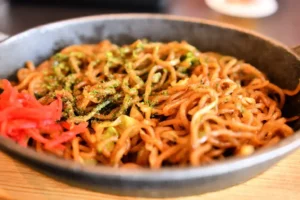Paper has always played a significant role in Japanese culture. It is the foundation of many of the country’s art forms and plays a vital role in numerous customs. But karakami stands out among Japanese paper types as an irreplaceable part of many traditional Japanese art forms and ceremonies. It adds its elegance to all manner of aesthetics, in crafts, ceremonies, writings, and even interior design.
Its patterns draw from the seasons, inspired by the gentle movements of leaves or rolling waves. And it adds a reminder of nature to even the most mundane aspects of everyday life. This simple paper has managed to retain the centuries of skill involved in its production, even as it has adapted to changing tastes over time. What has allowed it to embody the essence of Japanese tradition over hundreds of years? Let’s explore this paper type, from its original roots to its modern uses.
Table of Contents
ToggleWhat is karakami?
Karakami is a type of Japanese paper known for its decorative patterns and reflective appearance. It has been used in Asia for over 1,000 years, but it gained popularity when it began to be used by artists. It can be seen everywhere, as it has also become a commonplace part of many aspects of Japanese culture.
The History of Karakami
Chinese origins gave rise to the name “karakami.” Japanese diplomats who returned from China first brought it to Japan during the Nara period (710–794). When it arrived in the country, nobles used this new and beautiful paper exclusively for writing letters and poems. As a result, its popularity grew once artisans in Kyoto began producing it locally during the Heian period (794–1185).

Initially, only the upper classes used it, but its use spread when craftsmen began making sliding doors and paper screens (fusuma shoji) incorporating it. Eventually, samurai warriors and tea ceremony practitioners also came to admire and use it. By the Edo period (1603-1868), it was being produced in other cities, like Tokyo. This led to artisans developing their own local styles, and karakami being traded by merchants. It was not too long before even ordinary people were using it for wallpaper, interior decorations, and traditional crafts.
How is karakami made?
The delicate and intricate production process begins with a plain, handmade sheet of washi paper. A base color, made from mica and crushed shells, is then mixed with a seaweed-based glue and applied to the paper using a brush. To apply designs, patterns are also carved into cherry or magnolia woodblocks and painted with a new color.

A sheet of washi is placed on the block, and the pigment is lightly pressed onto the design using a fine-mesh sieve. For a more elaborate finish, some artists use stencils or sprinkle additional flakes of metallic powders for a unique, three-dimensional finish. After the printing is complete, the sheet is set aside to dry for several days.
Are you looking for great snacks for the upcoming winter? Check out Sakuraco! Sakuraco delivers classic Japanese teas, ceramics, and sweets from local Japanese businesses straight to your door!
The Cultural Importance of Karakami
The appreciation of imperfection, wabi-sabi, is deeply rooted in this craft. The patterns often feature natural themes, which reflect Shinto beliefs of harmony in nature. Karakami has always been associated with status and good taste. In ancient times, it adorned temples and the homes of the wealthy. Today, it can be found at places and events that celebrate Japanese culture, such as tea halls, formal celebrations, and festivals.
Karakami’s Revival
Despite its continued use in many traditions, this art form is facing a decline in modern times. Over the centuries, fires and wars have damaged or destroyed many original woodblocks and their designs. But many groups are making great efforts to revive the craft. Tokyo Matsuya is a publisher and wholesaler in the Ueno area of Tokyo that has been producing this paper since 1690. The company’s showroom has played a key role in recreating lost designs.

Karamaru in Kyoto is a studio operated by Kyo Karakami Maruni Co., Ltd., a company that has been in the business since 1902. It is one of only two companies in Kyoto that still produce paper using traditional methods and materials. This working studio provides artists with a space to refine their craft. They also offer workshops and printing classes, providing beginners with opportunities for hands-on sessions.
Why does karakami still matter in today’s Japan?
Karakami still matters in Japan because it preserves an ancient skill and highlights the value of handmade items in a disposable world. This craft has successfully adapted traditional aesthetics to modern design without compromising its core principles of patience and craftsmanship. Because of its traditional production process, variations in the mixture, hand pressure, and even humidity, each sheet is unique.

Preservation efforts also ensure that this beautiful art form has a future and will continue to inspire. Are you curious about crafts like karakami? Or have you tried your hand at making this special type of Japanese paper? Share your experiences or inquiries in the comments below!
Cited Sources
- Kyo Karakami. “What is Karakami?“
- Kirakaracho. “The Karakami Paper of Karacho“.
- Google Arts & Culture. “Edo Karakami Paper“.











